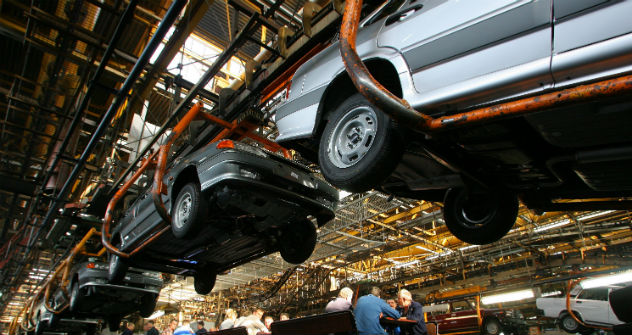FTA bodes well for Vietnam-Eurasian Union economic ties- experts

An AvtoVAZ manufacturing line.
ITAR-TASSRussian President Vladimir Putin signed a law ratifying an agreement and two protocols on free trade between the Eurasian Economic Union (EAEU) and Vietnam on May 2, 2016. A free trade agreement (FTA) with Vietnam will enter into force 60 days after it is ratified in accordance with national legislation in all EAEU countries and Vietnam.
In April 2015, Russian Prime Minister Dmitry Medvedev and his Vietnamese counterpart Nguyen Tan Dung said Russia-Vietnam trade was likely to exceed $7 billion by 2015 and $10 billion up by 2020. Experts told RBTH that the FTA would benefit Vietnamese garment and food exporters, while at the same time creating new opportunities for Russian automobile manufacturers in Vietnam.
Vladimir Kolotov, the head of the Far East History Department at St. Petersburg State University, says Vietnam is witnessing a growth in the food production, electronics and tourism industries. However, Russia has a relatively small degree of involvement in these sectors in Vietnam, he adds.
“There are only three areas where Russia is still keeping significant influence from the Soviet era: the oil and gas industry, power generation, and military and technical cooperation,” Kolotov says. “But there is tough competition in these areas now.”
Opportunities for Russia’s automakers
Russian car manufacturers such as AvtoVAZ, KamAZ, the GAZ Group and Sollers (which owns UAZ) have expressed interest in Vietnam’s automobile market. For the first time in history, cars manufactured in Russia were exported to Vietnam in the beginning of February 2016.
“In around 10 years, the Eurasian Economic Union will be able to export automobiles and trucks to Vietnam without paying import duties,” says Anton Tsvetov, Media and Government Relations manager at the Russian International Affairs Council (RIAC).
On Feb. 25, 2016 Russia was included in the register of countries cleared to export plant crops to Vietnam by the Vietnamese Agriculture and Rural Development Ministry's National Agro-Forestry-Fisheries Quality Assurance Department (NAFIQAD). Russia also won the right to export grain and grain products to Vietnam.
“As the FTA enters into force, certain types of fertilizers and agricultural produce will also become tax-free. Vietnamese exporters will be able to sell quite a number of food products and garments in the EAEU market without duties,” Tsvetov adds.
“Russia needs to go to the Vietnamese market with competitive products, however an unstable ruble and lack of access to credit hampers the efforts of Russian companies,” Kolotov says.
In 2015, then-Vietnamese President Truong Tan Sang said bilateral trade with Russia should rise from the present $2.6 billion after the FTA was signed, as several trade barriers would be removed. Vietnamese businesses would benefit from the agreement by getting access to a common market of close to 200 million people, he added.
The EAEU, which was established in 2014, comprises of the former Soviet republics of Armenia, Belarus, Kazakhstan, Kyrgyzstan, and Russia. The EAEU has already initiated talks on a free trade agreement with India, Iran, Thailand and other countries.
Read more: When Mikhail Gorbachev paved the way for Russia’s Asian pivot
All rights reserved by Rossiyskaya Gazeta.
Subscribe
to our newsletter!
Get the week's best stories straight to your inbox